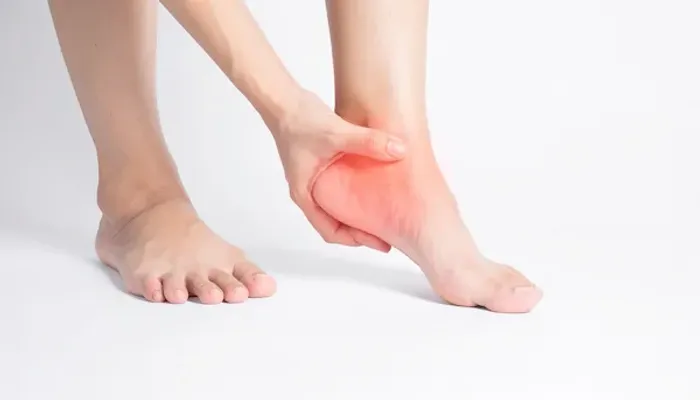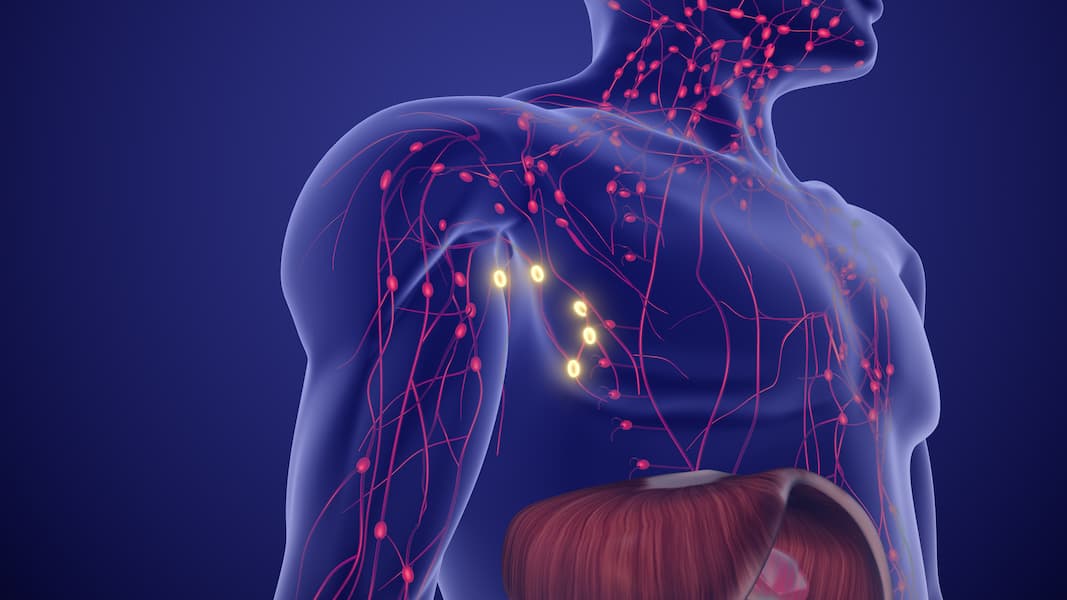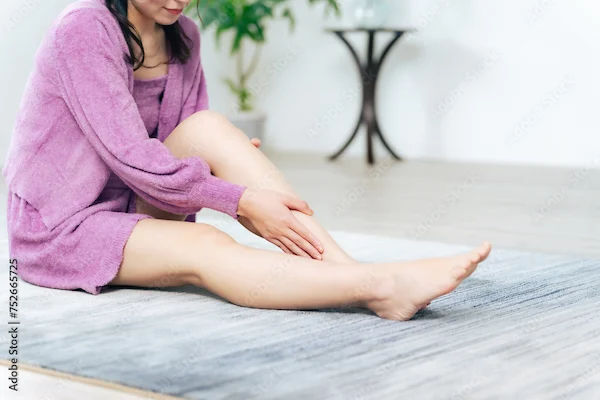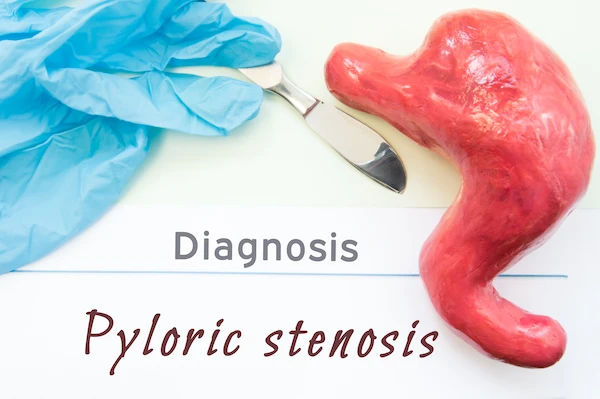Heels and Posture: The Hidden Link to Your Aches and Pains
Know about the effects on posture due to wearing heels, imbalance of body, common posture problems, other complications and professional tips on wearing heels.

Written by Dr. Mohammed Kamran
Reviewed by Dr. D Bhanu Prakash MBBS, AFIH, Advanced certificate in critical care medicine, Fellowship in critical care medicine
Last updated on 10th Oct, 2025

Introduction
We’ve all felt the boost of confidence that comes from slipping on a pair of stylish high heels. They elongate the legs, add a touch of elegance, and are a staple in many wardrobes. But what is the real cost of that elevation? The connection between heels, posture problems, and subsequent pain is more significant than most realise. Wearing high heels fundamentally alters your body's biomechanics, forcing it into an unnatural alignment that can lead to a cascade of issues from your feet to your neck. This article isn't about banning heels forever; it's about understanding the posture problems they can cause. We will delve into the science of how heels disrupt your stance, identify the specific aches and pains they trigger, and provide practical strategies to wear them more safely while protecting your long-term musculoskeletal health.
The Domino Effect: How Heels Throw Your Body Off Balance
When you wear high heels, you're essentially standing on an inclined plane. This simple shift sets off a domino effect throughout your entire body, known as the kinetic chain. To maintain balance and avoid falling forward, your body must make a series of compensatory adjustments. It's a clever survival mechanism, but one that places immense strain on joints and muscles not designed to work in that way for prolonged periods. Understanding this chain reaction is key to grasping why something as seemingly innocent as footwear can cause such widespread posture problems.
Consult a Top General practitioner for Personalised Advice
The Ankle and Foot: Ground Zero for Postural Problems
The first and most direct impact is on your feet and ankles. Elevating the heel shortens the Achilles tendon and calf muscles. Over time, this can lead to permanent tightening, making it painful to walk flat-footed even when you're barefoot—a condition sometimes referred to as "high heel hangover." Furthermore, your body weight, which is normally distributed across the entire foot, gets shifted forward onto the ball of the foot. This dramatically increases pressure on the metatarsal bones, which can lead to conditions like metatarsalgia (pain in the ball of the foot) and stress fractures. This unstable base is the primary trigger for all the posture problems that follow.
The Kinetic Chain: From Your Calves to Your Neck
As your weight shifts forward onto your toes, your knees must flex slightly to keep you balanced. This increased knee flexion places extra stress on the knee joint, a common factor in the higher rates of osteoarthritis observed in frequent high-heel wearers. To counterbalance the forward pitch, your hips push forward, and your pelvis tilts anteriorly (tips forward). This tilt exaggerates the natural curve of your lumbar spine, creating an excessive arch in your lower back, known as hyperlordosis. This misalignment strains the muscles and ligaments supporting the spine. Finally, to keep your eyes level with the horizon, your upper body leans back, and your head juts forward, leading to forward head posture. This places tremendous strain on the cervical spine and can cause chronic neck and shoulder pain.
Common Postural Problems Caused by High Heels
The compensatory posture forced by heels manifests in several specific and often painful conditions. Recognising these posture problems is the first step toward addressing them.
Exaggerated Lumbar Curvature (Hyperlordosis)
The anterior pelvic tilt caused by heel forces the lower spine into a deep, unnatural curve. While the spine has a natural lumbar lordosis to absorb shock, hyperlordosis amplifies this curve excessively. This puts constant pressure on the facet joints in the back of the spine and compresses the intervertebral discs. The muscles in the lower back become tight and overworked, while the abdominal muscles and glutes become weak and inhibited. This imbalance is a primary source of chronic lower back pain for many heel-wearers.
Forward Head Posture (Text Neck)
You might associate "text neck" with smartphones, but high heels are a major culprit too. As your hips shift forward, your torso leans back to centre your gravity. To keep your gaze level, your head must move forward, often by an inch or more. For every inch your head moves forward, its effective weight on your cervical spine increases by 10 pounds. This forward head posture strains the neck muscles (like the trapezius), can lead to tension headaches, and contributes to disc degeneration in the neck over time.
Increased Pressure on Knees and Hips
Research has shown that walking in high heels increases the load on the knee joint by up to 30%. This is because the flexed knee position increases the compressive forces on the inner side (medial compartment) of the knee, which is a common site for osteoarthritis. Similarly, the altered gait and hip positioning can lead to hip pain and bursitis, as the tendons and bursae around the hip joint become irritated from the abnormal mechanics.
Beyond Posture: Other Health Complications
The posture problems are serious enough, but the repercussions of frequent heel-wearing extend beyond alignment to tangible foot deformities and chronic conditions.
Foot Deformities: Bunions, Hammertoes, and Morton's Neuroma
The narrow, pointed toe boxes of many high-heel designs cram the toes together. This constant pressure can force the big toe joint to deviate outward, forming a painful bunion (hallux valgus). Similarly, other toes may curl into a claw-like position known as hammertoes. The excessive pressure on the ball of the foot can also pinch the nerves between the metatarsal bones, leading to Morton's neuroma, a painful, thickening nerve tissue that feels like walking on a pebble.
The Risk of Chronic Pain and Early Arthritis
The cumulative effect of these biomechanical changes is a higher risk of developing chronic pain conditions and premature wear-and-tear arthritis. The abnormal stress on the knees, hips, and spine accelerates the breakdown of cartilage. If you experience persistent pain that radiates down your leg (sciatica-like symptoms) or joint pain that doesn't resolve with rest, it's crucial to seek professional advice. If your foot or joint pain persists beyond two weeks, consult an orthopaedic specialist online with Apollo24|7 for further evaluation.
Pro Tips: How to Wear Heels Without Wrecking Your Posture
You don't necessarily have to abandon heels entirely. The key is mindful wearing and making smarter choices to minimise the impact on your posture.
Choosing the Right Heel: Height, Shape, and Fit Matter
Opt for a Lower, Thicker Heel: A wedge or a chunky heel under 2 inches is far more stable and distributes pressure more evenly than a 5-inch stiletto.
Look for a Platform: A platform under the front of the foot reduces the severe angle between the foot and the leg, making it more comfortable.
Ensure a Roomy Toe Box: Choose shoes that allow your toes to lie flat and spread out naturally to avoid compression.
Use Cushioned Inserts: Gel pads for the ball of the foot can provide significant shock absorption and relief.
Pre- and Post-Heel Rituals: Stretching and Strengthening
Before Wearing Heels: Do a quick calf stretch and rotate your ankles to warm up the muscles.
Limit Wear Time: Avoid wearing heels for entire days. Commute in flats and change into heels at your destination.
After Taking Them Off: This is crucial. Spend time stretching your calves, hamstrings, and hip flexors. Roll the arches of your feet over a frozen water bottle to reduce inflammation.
Corrective Exercises to Counteract the Effects of Heels
Incorporating these simple exercises into your routine can help reverse the tightness and weakness caused by heels.
Stretches for Tight Calves and Hip Flexors
Calf Stretch: Place your hands on a wall, step one foot back, keep the knee straight and heel on the ground, and lean forward. Hold for 30 seconds.
Hip Flexor Stretch (Kneeling Lunge): Kneel on one knee and lunge forward, keeping your torso upright. You should feel a stretch in the front of the hip of the kneeling leg.
Strengthening Exercises for Glutes and Core
Glute Bridges: Lie on your back with knees bent. Squeeze your glutes to lift your hips off the floor, creating a straight line from knees to shoulders.
Planks: This exercise strengthens your entire core, which is essential for supporting a neutral spine and counteracting hyperlordosis.
Conclusion
While high heels can be a powerful fashion statement, it's vital to wear them with a clear understanding of their impact on your body. The posture problems they induce—from hyperlordosis to forward head posture—are not just about aesthetics; they are real biomechanical issues that can lead to chronic pain and long-term health complications. The goal is not to inspire fear, but to promote informed and mindful choices. By opting for more supportive styles, limiting the time you spend in heels, and incorporating corrective stretches and strengthening exercises into your routine, you can enjoy the benefits of heels without sacrificing your musculoskeletal well-being. Your future self will thank you for the balance you strike today. If you're experiencing ongoing discomfort, take the first step towards relief by consulting a healthcare professional to get a personalised assessment.
Consult a Top General practitioner for Personalised Advice
Consult a Top General practitioner for Personalised Advice

Dr. M L Ezhilarasan
General Practitioner
6 Years • MBBS
Visakhapatnam
Apollo 24|7 Clinic - Andhra Pradesh, Visakhapatnam

Dr D M Karthik
General Practitioner
4 Years • MBBS, Fellowship in Diabetes Mellitus, Advance certificate in Diabetes Mellitus, Derma Nutrition Certification
Visakhapatnam
Apollo 24|7 Clinic - Andhra Pradesh, Visakhapatnam

Dr. Gunashree V L
General Physician/ Internal Medicine Specialist
3 Years • MBBS
Bengaluru
Apollo Clinic, JP nagar, Bengaluru

Dr Syed Mateen Pasha
General Physician
2 Years • MBBS
Bengaluru
PRESTIGE SHANTHINIKETAN - SOCIETY CLINIC, Bengaluru

Dr Suseela
General Physician
5 Years • MBBS
Bengaluru
Apollo Medical Center, Marathahalli, Bengaluru
More articles from General Medical Consultation
Frequently Asked Questions
1. Can wearing flats all the time fix my posture problems from heels?
Switching to supportive flats is a great start, but it may not be enough to reverse muscle imbalances. Tight calves and weak core muscles need to be actively addressed through specific stretches and strengthening exercises for a full recovery.
2. What is the safest heel height for posture?
There is no completely 'safe' height, but a heel under 2 inches (or 5 cm) significantly reduces the biomechanical strain. Wedges and chunkier heels are always a more stable and posture-friendly option compared to stilettos.
3. I have to wear heels for work. What can I do?
Be strategic. Commute in supportive shoes and change at the office. Keep a pair of comfortable flats under your desk to wear when sitting. Make pre- and post-work stretching non-negotiable to counteract the daily effects.
4. Do heels cause sciatica?
They can contribute to it. The pelvic tilt and lumbar spine compression can irritate the sciatic nerve, which runs from your lower back down your legs. This can mimic or trigger sciatica-like pain, especially with frequent wear.
5. Are there any heels that are good for your posture?
No heel is 'good' for posture, as they all alter your natural alignment. However, shoes with a very slight heel (e.g., 0.5-1 inch) along with arch support, like some walking shoes or orthopaedic styles, can be beneficial for certain foot types by providing slight calf relief, but they are fundamentally different from high-heel designs.




